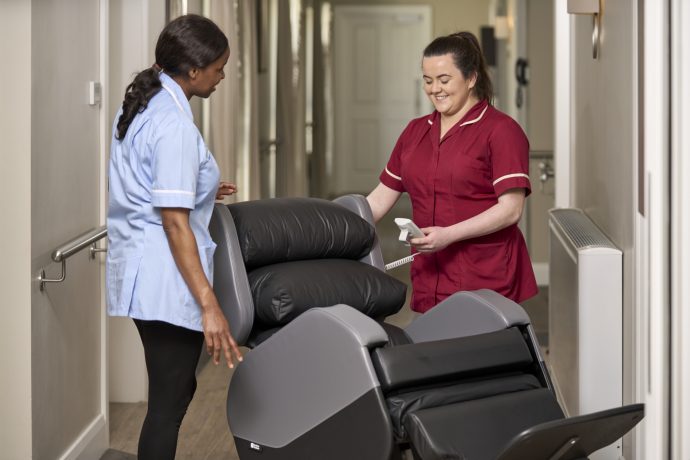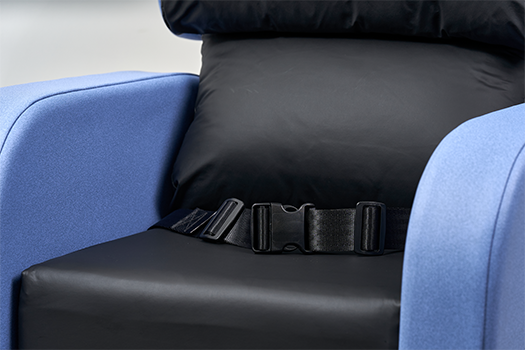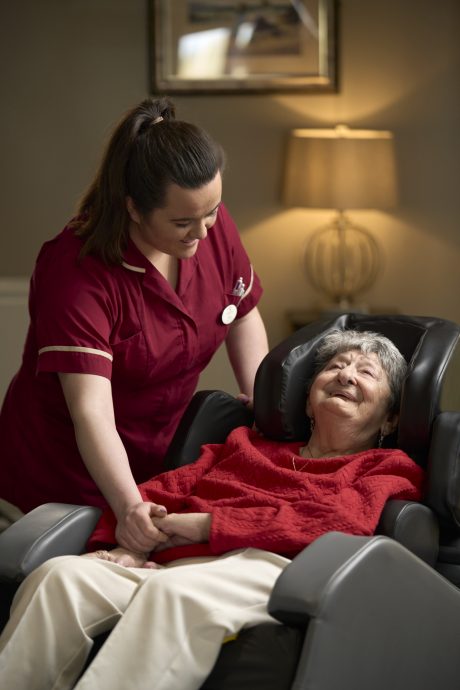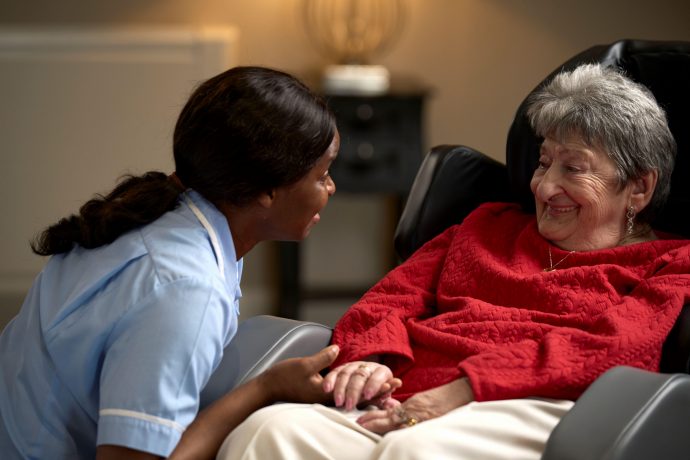
2nd September 2025


Let our online product finder guide you through our simple steps to choose the chairs that best meet your patient’s needs.
Seating Solution FinderThe Envelo cushion provides excellent pressure redistribution and comes as standard on all Seating Matters chairs, meeting the clinical needs of most clients.
Explore Envelo RangeSeating Matters specialises in clinical, therapeutic seating solutions designed to improve patient care and safety, offering products for pressure injury prevention, postural support, and mobility assistance in healthcare settings.
Learn MoreDiscover how Seating Matters has transformed lives with our innovative seating solutions - read our inspiring customer success stories now!
Customer StoriesUsed in academia, in clinical practice and with caregivers around the world to guide their practices around specialist seating.
Download Free Handbook

In different countries and in different regions, the regulations and rules around restraint differ. Sometimes even within one facility, the guidelines can differ from unit to unit depending on the patient groups. In this article, we are aiming to outline some of the issues around restraint and ways that proper seating can help reduce some of the risks around this contentious issue. Please bear in mind that you must follow the guidelines set out in your own place of work and comply with your internal, regional or national laws and regulations around restraint.
In 2016, we read about a case in Northern Ireland where an elderly gentleman with dementia was tied to his chair by two care home employees and left unattended for at least two hours.
This was a horrific ordeal for the gentleman and a tragic situation for his family to learn, who were absolutely devastated when they discovered what happened, days after the incident had occurred. On examination they found bruises and marks on his arms. This obviously caused the gentleman great pain and distress, and the incident affected his personality afterwards, leaving him nervous and withdrawn. The care home in question has since closed and the member of staff found guilty of assault.
Unfortunately this is not an isolated case. Often with late stage dementia patients and patients with other neurological conditions; they can pose a safety risk to themselves and to others. They might impulsively try to stand up whilst forgetting that they cannot weight bear, therefore they are a high falls risk. Another key concern is when patients might become agitated and lash out, as they risk injuring themselves or others. As a result of this, we see restraint being used more often, and most commonly, the use of belts/lap belts as a safety measure.
When a patient is individually assessed and matched with a chair to meet their needs, often the need for restraint is reduced and incidence of falls from chairs can be lower.
Your elderly mother has dementia. She now lives in a care home specially catering for neurological conditions. She uses a wheelchair for mobility. On occasion she has been known to stand up and stumble from her wheelchair. She needs help completing this task but sometimes she forgets that she is not strong enough to stand up on her own. Just a few days ago she unfortunately had a nasty fall, which resulted in an open head wound and a trip to the Emergency Department. You were devastated when you saw the after effects of this fall and vowed you would do whatever possible to ensure it doesn't happen again. You talk to the staff at the care home about the various options to prevent this and keep her safe, which include restraint.
Weigh up the pros and cons of the situation:
Restraint is a complex subject. At Seating Matters we know that when patients are matched with seating appropriate to their size and clinical needs, the need for restraint is often reduced.
We have seen the difference a proper chair can make to a patients' quality of life, comfort and safety. If a patient is sitting in an over-sized standard chair which is not tailored to their requirements, they are more at risk of falling out and causing injury or harm. When they are safe, supported and snug within their chair which is designed for falls prevention and is exactly matched to their needs, they can be less agitated, more likely to sit peacefully and be safe, enjoying their surroundings. This can allow the patient a greater sense of independence and dignity, rather than being restrained which can have psychological as well as physical side effects.
The real danger with restraining a patient is where the use of restraint is abused to the extent where it is used as a result of convenience rather than necessity. Sometimes we hear of extreme examples where shocking and unacceptable levels of restraint are applied to the most vulnerable members of our society. Although it can be abused in some extreme cases, most often it is used by a care giver as a last resort when they wish to protect the patient from doing physical harm to themselves or other patients. Sometimes the care giver may know of no other way to prevent such harm, and therefore they see a temporary restraint as the least harmful option.
While definitions may vary from region to region, generally, that which restricts free movement of the patient can be considered restraint. In terms of specialist seating, the following things can be considered as restraint:
Lap Belts
In our experience, we have witnessed many cases where belts have been unnecessarily prescribed. There could be significantly less requirement for belts if patients were seated properly in a chair suited to their physical dimensions which keeps them feeling safe and secure. By belting them into a chair, they are restricted to remain in their chair and their independence and function are adversely affected. We only recommend belts are used during transportation or after a thorough risk assessment.
Lap Trays/Tables
Lap Trays are very useful to enable self feeding from the comfort of the patients chair, however if not removed once lunch or dinner time is over, these can be considered a restraint as they impede the free movement of the patient in the chair.
Tilt in Space
Tilt in space can be a useful function in order to easily redistribute pressure and to improve positioning and comfort. If abused and a patient is left in tilt for long periods of time without the ability to remove themselves from tilt, it could be considered counterproductive and therefore a restraint. The use of tilt should be prescribed in appropriate circumstances and closely monitored and managed. Often a 5 minute tilted position is sufficient in order to redistribute pressure and re-oxygenate tissues to reduce the risk of developing pressure injuries, after which the patient can be tilted back to a normal upright sitting position
There is no easy or quick answer to the question of using restraint. It should always be risk assessed on an individual case by case basis. The rules around restraint are very complex and are different in each geographical area we encounter. What needs to be reduced is the use of unnecessary restraint where it is being used out of convenience rather than necessity. Excessive use of restraint leads to risks of negative physical and emotional side effects for the patient.
In all situations the least-risk option should be considered, i.e. consider the use of tilt in space to reduce agitation in the chair, versus not using tilt in space and the client becomes agitated and steps out of the chair, risking a serious injury from a fall. When restraint is approved for use it must be closely monitored to determine the effect it has on the patient both physically and psychologically.
If the use of restraint is being considered to keep a patient or loved one safe, consider why and seek to fix the root of the problem, not just address the symptom which is a short term fix.
Restraint is not the only answer. Ask yourself these key questions about their current situation
The Atlanta™ from Seating Matters has been called a 'Magic Chair' in the past by clinicians. With its deep reclined seat and back angle recline, it creates a very safe and comfortable position for patients. It comes with an adjustable angle leg rest for optimum comfort. In some cases, patients with conditions such as Huntington's disease have experienced a reduction in involuntary movements in the past and numerous patients with dementia have shown a reduction in agitation when using this chair properly. It is a fantastic chair to consider for any patient who presents as a falls risk.
Sign up to our mailing list to get practical tips and latest research delivered to your inbox!
Take the next step to achieve clinical excellence and a 24 hour package of care for patients.

Arrange a free, no obligation seating consultation with your local Seating Specialist.

Schedule a call at a time that suits you to speak with our experts.

Arrange a free, no obligation trial of clinical, therapeutic seating

2nd September 2025

15th August 2025

15th August 2025